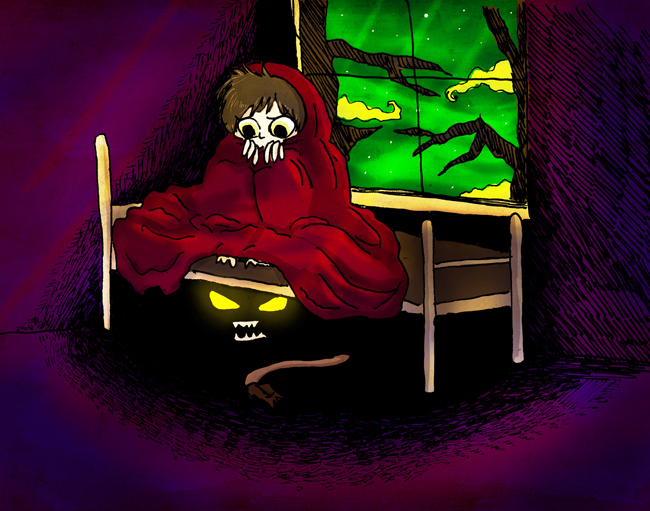This Halloween, many UT students will venture into Austin after dark, dressed in costume garb, unafraid. However, the night wasn’t always so welcoming to human beings, and people weren’t always so bold after the sun went down.
Today, some children have a seemingly irrational fear of the dark that manifests through talks of monsters under the bed and in the closet. Of course, there aren’t monsters lurking in our homes waiting to eat us. In other places in the world, though, there is danger in the dark, and the monsters are very real.
In Africa’s Okavango Delta, a 2012 study investigated coexistence among predatory species over three years. The study found wild dogs and cheetahs hunt more frequently by moonlight while lions and hyenas maintained a constant activity pattern across the lunar cycle. Their results suggest that sub-dominant species are restricted by light availability because they risk encountering other hunting animals, whereas species higher on the food chain dominate the dimly lit savanna.
Although we see ourselves as the dominant species on Earth, humans weren’t always at the summit of the hierarchy. In fact, animals that evolved for a nocturnal environment have eyes that function better than ours do in the darkness. Lions, for instance, can see six times better than humans at night because their visual anatomy is better developed for night vision. If it is us against a lion at night, our eyes aren’t doing us any favors.
Human senses evolved for the daytime. Our eyes include receptor cells called rods and cones, which send vision signals to the brain in response to light. While cones are useful for distinguishing between different colors and small details, rods help us see at night because they have a much higher sensitivity to light.
Nocturnal animals have a reflective layer of cells behind the retina that increases the potential for the eye to absorb light waves. This means that nocturnal animals can see under dimmer conditions because their eyes make better use of the light than human eyes. If you shine a flashlight at a cat in the dark, their eyes will reflect the eerie eye shine signature of a nocturnal predator.
While humans aren’t particularly suited for the night time, most of us are still able to see in shades of black and white at dim-light levels. However, for a small portion of the population, vision defects inhibit night vision.
A 2003 case study explored the pathological basis for children, who feared the dark, and found that, for subjects, night blindness was at the root of the problem. Night blindness, known as nyctalopia to the medical community, is not a condition in itself. Instead, it is a symptom of a number of vision defects including vitamin A deficiency, glaucoma and severe nearsightedness.
Children with eye problems, causing night vision difficulties, expressed a profound fear of the dark with one child even suffering a fear of shadows. Although the children in the case study suffered vision difficulties that led to a fear of the dark, the researchers reasoned that low-light conditions may be enough of a vision impairment to inspire fear in any person.
Today, the monsters that lurk in the city after hours probably aren’t as scary as a hungry lion — unless you consider the slew of tasteless costumes on Sixth Street, in which case, you may be sorry that your night vision works so well.















